Here’s the deal… I’m going to take 30% [or maybe even 50%] of all the food produced and throw it straight in the bin – probably before it even gets to a store.
Of the food that makes it to the grocery store I’ll get rid of 20% [maybe even 40%] before you can see it. Then once you’re home with your purchases and sitting down to enjoy that meal you just made, I’m going to take 20% of what is on your plate – as that’s going in the bin too. Ok?
What? That’s not acceptable? Why not? It’s in-effect what we are all doing to ourselves each year so why not just cut to the chase?
Whatever happened to ‘Waste not want not’?
I recently attended a talk held as part of the annual Sydney Festival. Whatever happened to ‘Waste not want not’? was moderated by journalist and Love Food Hate Waste ambassador Sarah Wilson. The panel included Georgie Somerset, an Australian beef producer; Natalie Isaacs, the Founder and CEO of 1 Million Women; Jane Fullerton Smith, Managing Director of Greenshoot Pacific; and Professor John Crawford, Sustainability and Complex Systems, University of Sydney.
The session was thankfully more educational than preachy, did not appear to have too much of an agenda other than the advertised topic, and the information shared was staggering…
A few facts to set the scene:
- Globally, “due to poor practices in harvesting, storage and transportation, as well as market and consumer wastage, it is estimated that 30–50% (or 1.2–2 billion tonnes) of all food produced never reaches a human stomach.”
– Source: Global Food Report
- In Australia we are discarding up to 20% of the food we purchase – that’s over 4 million tonnes for the country, and means on average over $1000 per household goes in the bin each year.
- And get this, 20-40% of fruit and veg are rejected and thrown away by stores because they aren’t pretty enough. It seems we’ve become so discerning that we can’t bear to buy an apple with a dent or a tomato that isn’t perfectly round, no wonder freegans find it so easy to survive. One of the panelists made a spectacular point on this issue saying “we aren’t perfect, we have spots on us, why should we expect fruit and veg to be perfect?”. Think about that next time you go to a farmer’s market.
– Source: various information found here, here and here.
Ultimately, as a society we have lost touch with where food comes from, this makes it far easier to waste.
When people throw away food most don’t think past that mouldy carrot or half packet of chips, but the impact is much greater. The resources that go into making those products are enormous – energy, water, land and human labour are just the beginning, and in effect they are being thrown away too.
You can see all my tweets from the session over here but a few points that really stood out to me on the evening were around animal farming, sustainable practices of Australian herders and how pop-culture has impacted the way we see food:
- It has become fashionable to leave food on your plate and it is even recommended by experts as a dieting tip. Does this strike any one else as slightly insane? How about this… if you want to eat less then cook less and put less on your plate.
- Only approx 8% of land in Australia can actually grow crops, however cattle and other grazing animals can be ‘grown’ on most of the continent. Whether you eat meat or not this is an incredible fact. There is a huge amount of land that is inhabitable and inhospitable yet it supports one of the biggest industries in the country. Yes, I’m sure that some agricultural land is used for raising animals, no I don’t know how much.
- Managed grazing in Australia is on the rise. This is a very positive move to reduce soil/land degradation in animal farms. One of the biggest negatives against grazing is that it degrades already-poor land and harms native vegetation, I don’t know the stats around it but it seems like this is an issue that is top of mind for the industry and being actively managed – although I’m not sure how widely. This topic alone could have taken up an entire session but is admittedly more about production than waste…
- Low cost food and rampant consumerism pushes us to just buy more. Watch what you purchase and don’t buy extra simply because it is on sale. 2-for-1 is not a bargain if half of it gets thrown away.
For more information there is a great Infographic about ‘Fast facts on food waste’ that is worth checking out, and Sarah Wilson has done a post with tips on how you can save waste and ultimately money.
One waste-saving suggestion made on the evening was to simply take stock of what you have before you go out and buy more.
For those of us with the convenience of food shops close by, this means consciously deciding at least one night a week to make due with what you have. Clean out the crisper, dive into the back of the pantry and look in the corner of the freezer to use existing items first.
My top tips for rescuing food before tossing it in the bin?
- Make veggies into soup and stir-fries – and fruit into sauces, jams or perhaps desserts
- Take leftovers the next day in a different form – turning dinner into a sandwich or a salad for variety
- Dry fresh herbs – simply hang them an area with good air circulation or dehydrate in a very low oven
- Use stale bread, cereal and chips as coatings or binders
- Give cooked grains new life – even using them for breakfast
- Get it into the freezer, with a label on it – just remember to make a concerted effort to use what’s in your freezer so it doesn’t get tossed six months later! I’ll be sharing a list of all the things I freeze soon, some of them may surprise you…
Ok, that’s it for now and if you’re still here thanks for hanging around but you may be asking, how does this relate to Plum & Ginger Sauce?. Well, these plums were nearing their end date and needed to be saved asap.
I’d purchased a huge bag for about $3 [humm, see above re low cost food…] and had been slowly eating the ones that were splitting – but a girl can only have so many plums in a short span of time so into a pot they went with some fresh ginger and fresh thyme. The whole thing took less than an hour to come together and most of that time was not hands on.
This sauce would be brilliant over yoghurt or ice cream, used instead of syrup for waffles or swirled through a simple cake batter before baking. I however put it straight in the freezer as I have a future plan for it… cue evil cackle. The leftover thyme will be hung to dry and replenish my stash, the ginger will be used in everything from tea to stir-fries.
Are you conscious of how much food goes in the bin and do you have any top tips for reducing waste?
Plum & Ginger Sauce
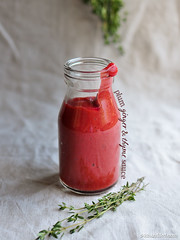 Sauces and jams are the perfect way to save fruit that is nearing the point of no return. This one spices up summer plums with ginger and fresh herbs.
Sauces and jams are the perfect way to save fruit that is nearing the point of no return. This one spices up summer plums with ginger and fresh herbs.
INGREDIENTS:
- 500 g very ripe plums, chopped
- 1 tsp fresh ginger, grated
- 3 sprigs fresh thyme or basil*
- juice from 1/4 lemon
- 1/4 c water
METHOD:
Place fruit – including skin, ginger, herbs, juice and water in a sauce pan and bring to a boil.
Reduce heat to medium-low and simmer 30 minutes.
Remove herb sprigs leaving any leaves in the sauce. Allow to cool slightly and puree with an immersion blender.
Makes approx 1 cup. Store in fridge for up to one week or portion into an ice cube tray and freeze for later.
*COOK’S NOTES:
- Herbs: I used fresh thyme in this but basil would be incredible too – purple thai basil would be even better.
- Fruit: don’t have plums… peaches or nectarines would work perfectly.
- Storing: I couldn’t be bothered to bottle [preserve] this – hence the freezing instruction – and if you wanted to so that route you should probably add a bit more acid for food safety reasons.
gluten free // dairy free // refined sugar free // vegan // nut free // soy free
~
How to: Dry Thyme
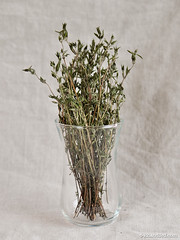 Fresh herbs are one of those things that regularly die in the back of my refrigerator, but they are so easy to dry and use later! Less food waste goes in the bin and a replenished supply of dry thyme goes in your cupboard – everybody wins.
Fresh herbs are one of those things that regularly die in the back of my refrigerator, but they are so easy to dry and use later! Less food waste goes in the bin and a replenished supply of dry thyme goes in your cupboard – everybody wins.
METHOD:
Loosely tie washed fresh thyme into bunches*, fanning out stems to allow for air circulation.
Hang bunches in a well ventilated area until brittle and dry. This will probably only take a few days unless you live in a very humid area.
Store in a glass jar as full stems or loose leaves.
*COOK’S NOTES:
- Bunches can be tied with kitchen twine but in reality I twist a rubber-band around the ends then stretch the band over a kitchen doorknob. Just keepn’ it real here folks.
- You can place the fresh herbs on a tray and dry in a very low oven for a few hours but unless you are somewhere very humid why bother using energy for this?
- This trick works wonders with oregano, basil and rosemary too.
- For coriander [cilantro], parsley and mint I recommend wrapping in plastic and freezing them instead.
Oh interwebs the universe has been at it again. In a stunning twist of irony I was confronted – while writing this post – with a sudden infestation in our cupboards that did not exist as recently as the previous evening. While cleaning the third of six shelves in our pantry I discovered an old box of freekah that some little bastard insect tribe made their own.
Everything was pulled out, wiped down, and if it hadn’t been touched at least a year, thrown out. Food waste at its worst. It might be best we don’t even speak of the seasoned salt with a 2008 expiry date. Well, at least we’re off to a fresh start…

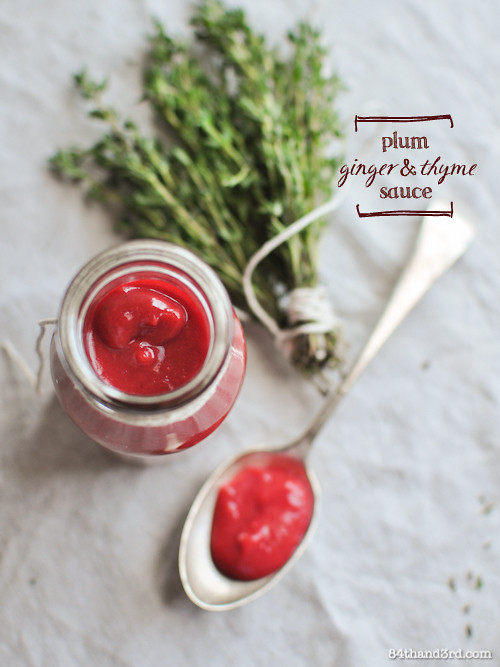
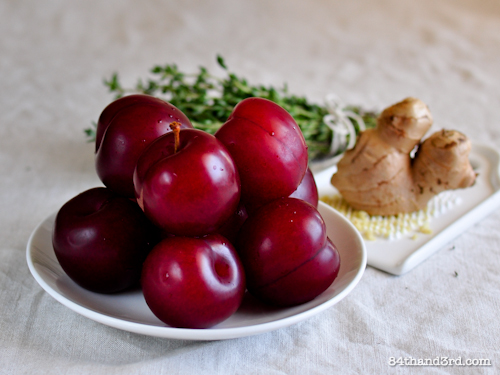
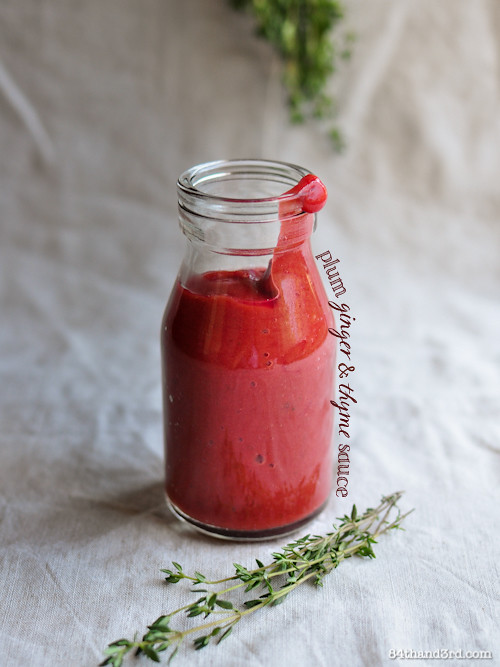
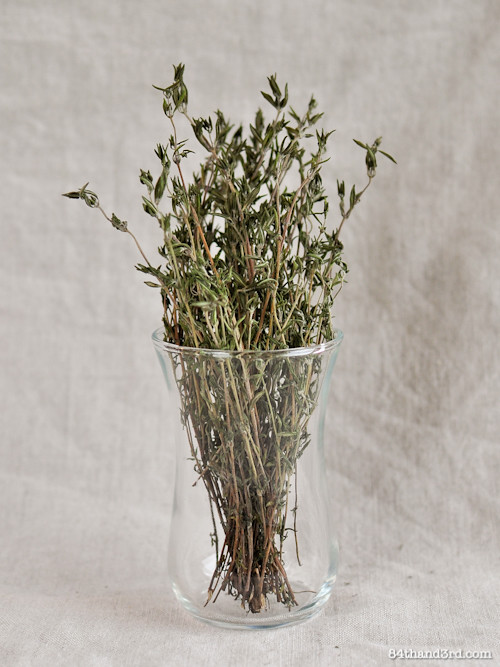
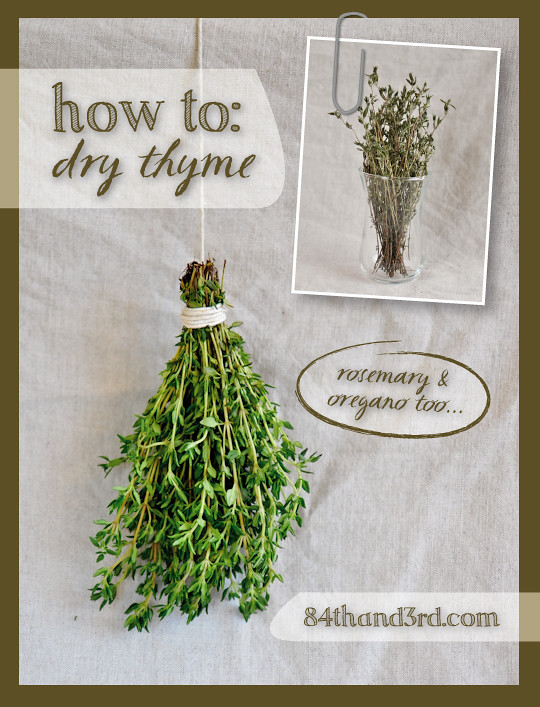

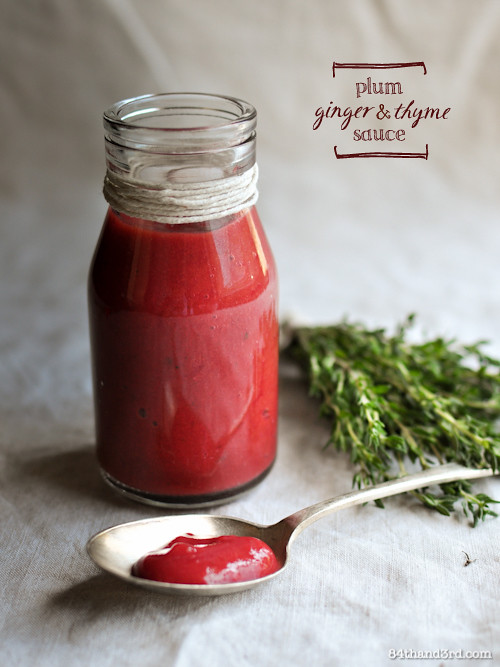
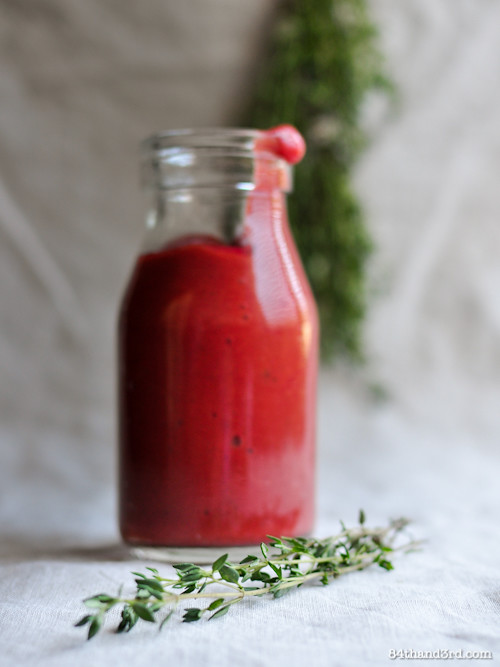
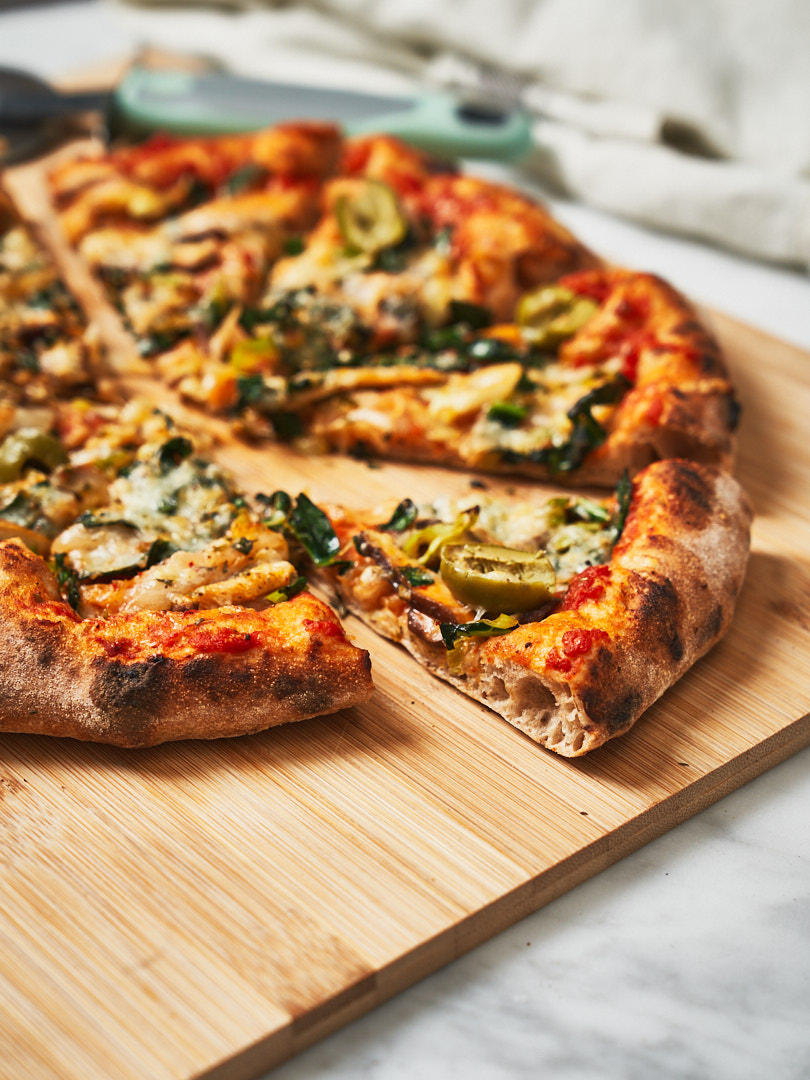
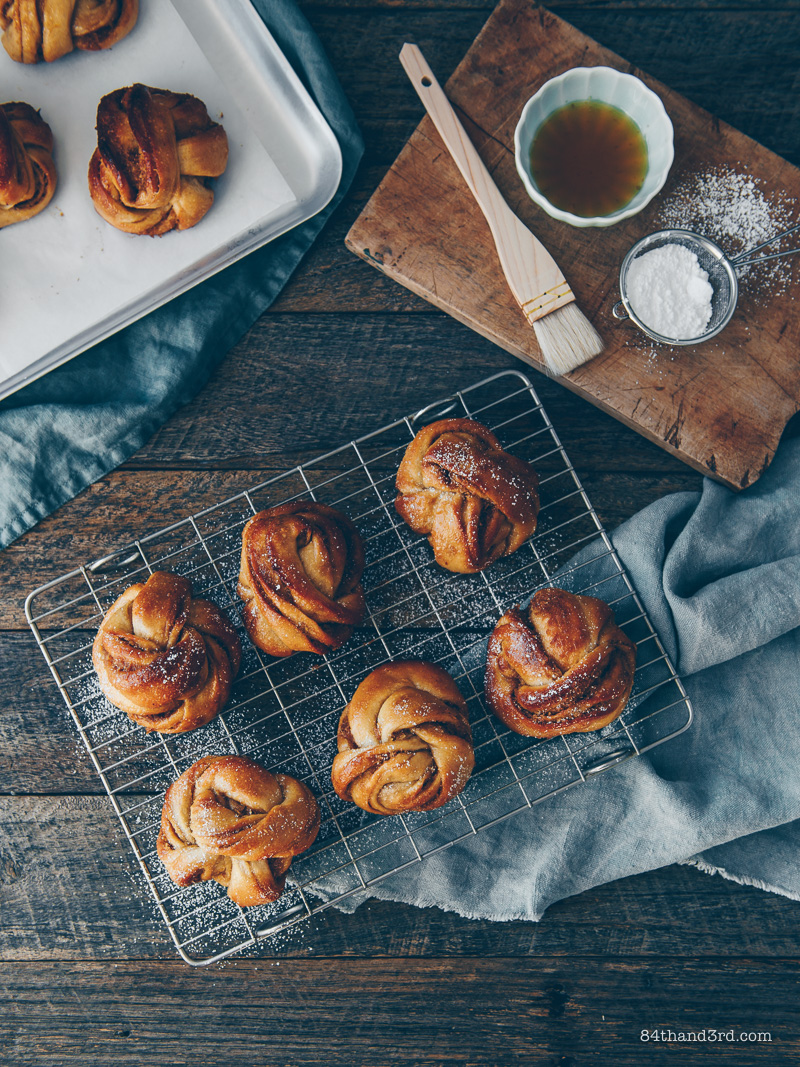
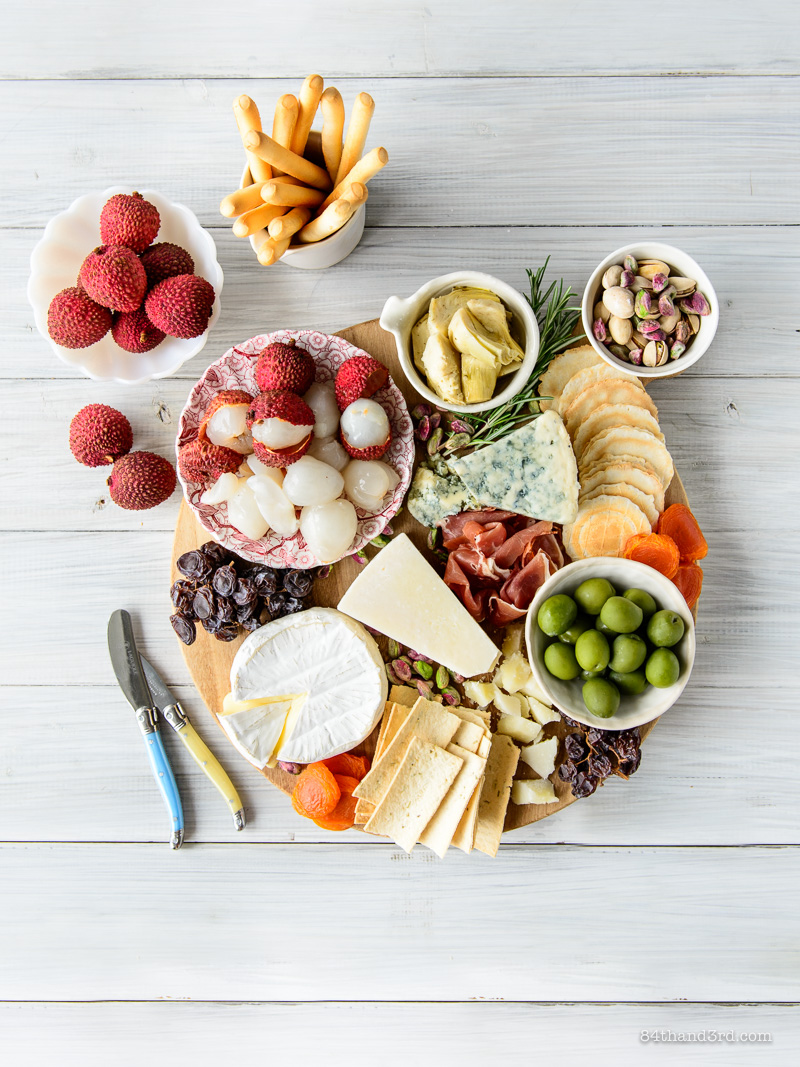
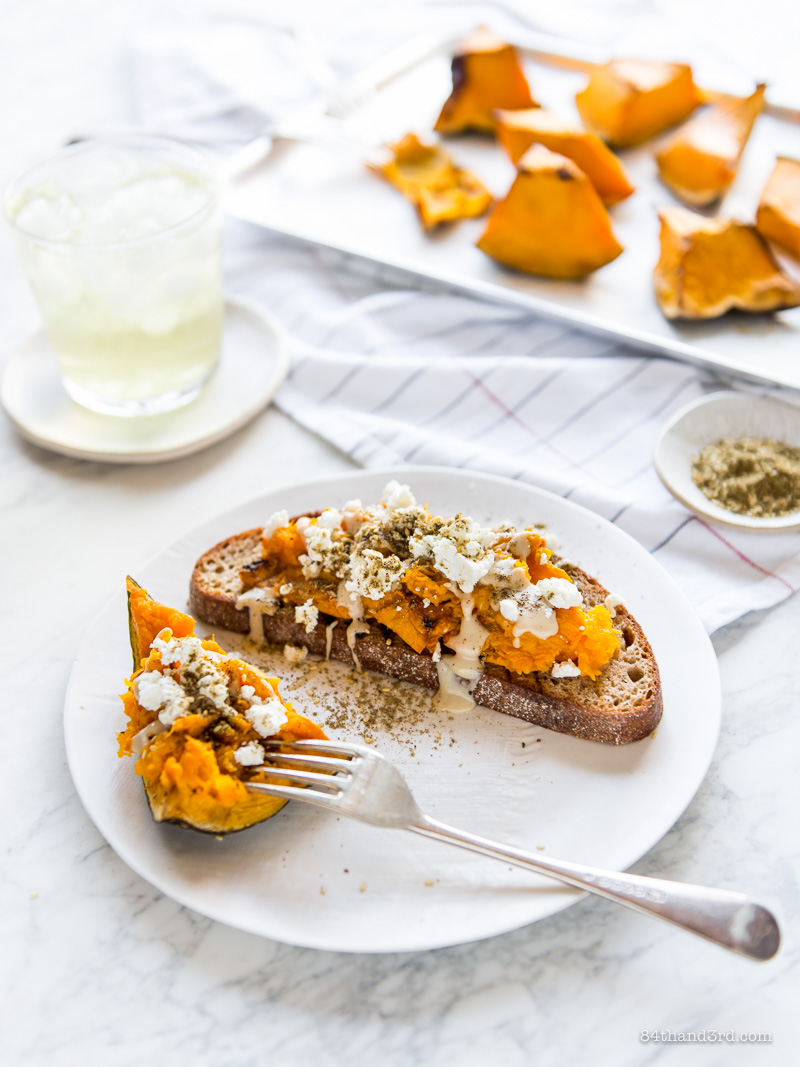

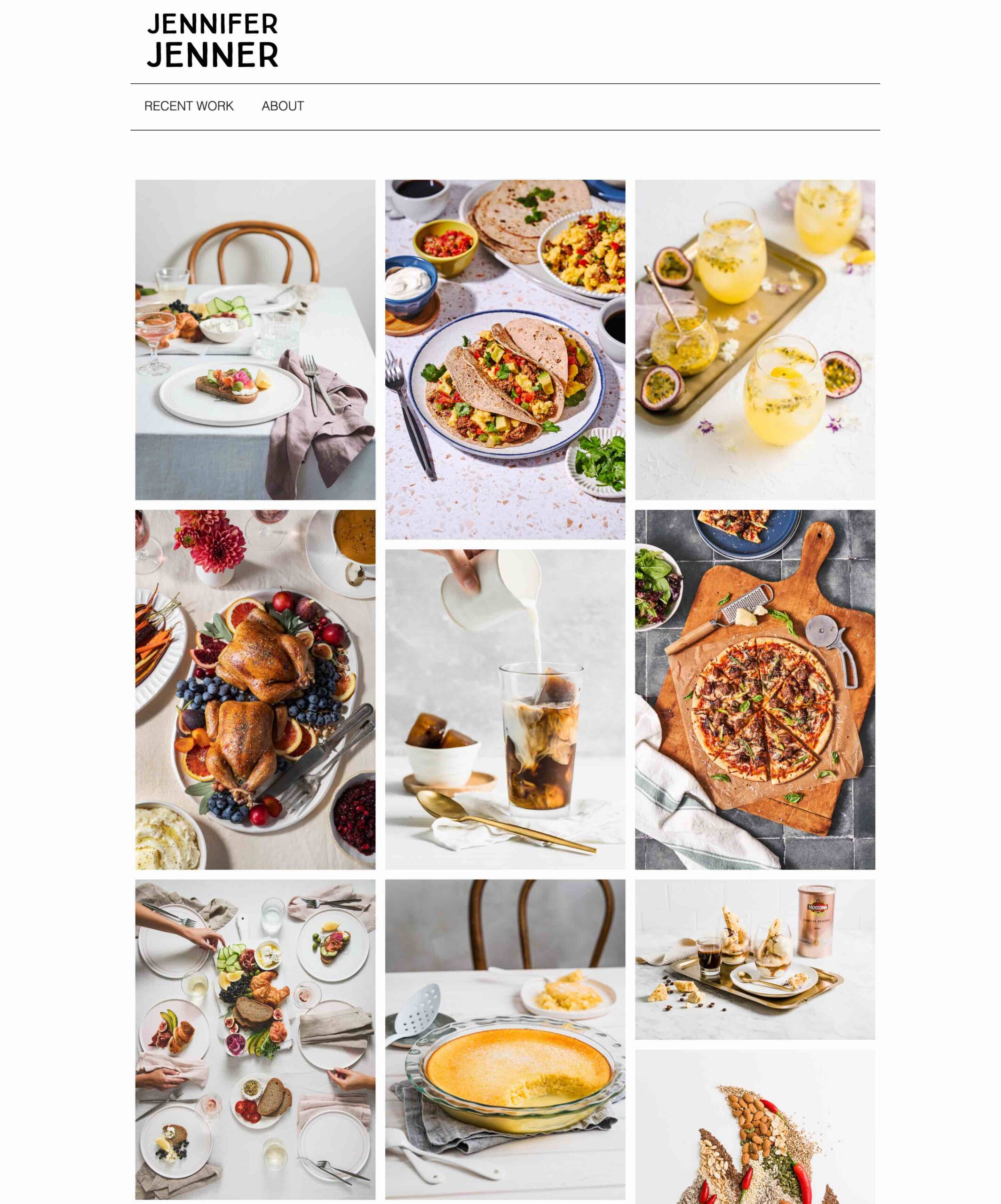
Oh JJ don’t worry as hard as we all try I find things waaay past their used-by date in my house too. I’ve always tried not to let things go to waste and I think I’m pretty good at it.
I freeze heaps and heaps of things and I’ve gotten better at being inventive with my cooking to try to use things up. It just takes a bit of creativity really.
I got a fruit/vege box delivered a few weeks ago and it contained a big pumpkin, which I don’t eat. So I roasted it up, scooped out the flesh and froze it ready for baking (yes I like pumpkin in baked goods, yes I’m odd).
Great post!
It’s amazing how time passes and jars hide in dark corners, I envy you and all your freezers! Good tip on the pumpkin, I roast it and freeze for later too – although I love it straight as well 😉
I don’t like to waste food either, your tips on how to make the most of the food we have are great! This sauce is so gorgeous, the plums give it the loveliest color!
Thanks Laura, will try to post some more soon 🙂
What a wonderful, realistic, and yet tragic blog when you take how many people go to bed hungry and malnourished even in Australia! Living rurally, because of health and transport difficulties, I cannot buy food as often nor as fresh as I would like it! Yet every time I throw even a few wilted vegetable leaves in the bin I feel like criminal towards myself, my purse and my green and sociological makeup! I have found ‘my’ way in making lists, preplanning menus, changing those if i feel some raw materials are reaching their use-by date! I would say I still have to bin about 5% of what I buy and that is about 3% too much!!
Awareness is definitely the first step and it sound like you are doing it quite well. Yes, the hunger issue is a whole other can of worms but shocking considering how much is tossed before it even reaches consumers…
What a lovely combination and the colour is just gorgeous!
Great round up of tips from the session JJ, it’s sad that produce has to look perfect to appeal to people. My Mum always shopped at farmers markets and I just love the often odd looks you get from that veg – twin carrots, potato snowmen, blemished apples. I wish we had more farmers markets open all week so that the producers and people could benefit.
Love the idea of this sauce too. I make povidl from my over ripe plums.
I feel the same way about markets. Googled povidl and came upon your recipe – going for that next time, it sounds brilliant!!
I’m the founder/moderator for Punk Domestics (www.punkdomestics.com), a community site for those of use obsessed with, er, interested in DIY food. It’s sort of like Tastespotting, but specific to the niche. I’d love for you to submit this to the site. Good stuff!
JJ, a timely reminder for all of us, thank you. Over the Christmas break I cleaned out my larder… well, actually rearranged it and tidied it all. Peter and I decided we were not going to buy anything more (except for fresh produce) until we have eaten our way through all that we have in stock.
On the topic of the recipe ideas, love it. And your photos are beautiful.
Thanks and great tip Lizzy, it is amazing how many things can be substituted when push comes to shove!
That’s a wonderful article. I hate wasting food but end up wasting some of it. Sometimes I overestimate myself and buy more vegetables than I can cook. I am trying my best not to do it. I am getting better but still far away from perfection. The funny thing is, I was looking for a thyme recipe to use up my thyme that I bought last week. I will dry and store some but wanted some of it fresh too. Thanks a lot for the post and sharing the links.
Cheers Soma, I find that freezing leftovers makes them seem a bit less repetitive when they are pulled out the next week!